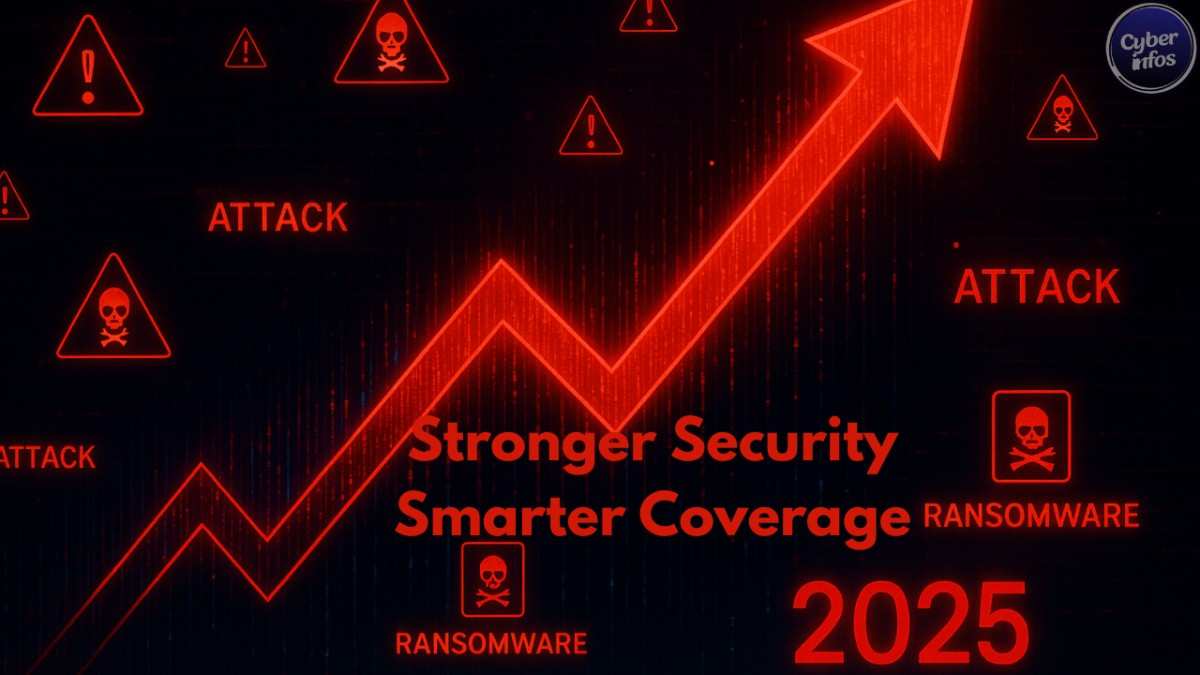Cyber insurance in 2025 has become a core part of business risk strategy as rising cyberattacks continue to hit organizations across every industry. Threats that once targeted only large enterprises now affect small and mid-sized companies just as aggressively. Attackers use automation, AI-driven phishing, and clever supply chain attacks to break into systems that lack modern security controls. Because of this surge, cyber insurance trends in 2025 look very different from what businesses were used to a few years ago.
Insurers are tightening cyber insurance requirements, adjusting coverage limits, and demanding proof of real security practices before approving a policy. Companies that fail to show they can manage cyber risk properly face higher premiums—or get denied altogether.
Why Cyber Insurance Has Become Stricter in 2025
Cyber insurance in 2025 isn’t built on trust; it’s built on evidence. After years of paying massive ransomware claims, insurers now require businesses to demonstrate real, functional security controls.
Three things forced this shift:
1. Rising cyberattacks driven by automation
Attackers no longer need to spend weeks studying a target. Automated scripts scan for weak systems within minutes, making unprepared businesses easy victims.
2. Expensive ransomware attacks
Ransomware attacks remain the most common cause of cyber insurance claims. Recovery costs, legal fees, and downtime have skyrocketed, pushing insurers to limit coverage.
3. Growing supply chain attacks
A single compromised vendor can expose dozens of companies. This has made vendors and third-party access a major focus in cyber insurance requirements.
Businesses that want strong cyber insurance coverage now need to prove they can handle these risks—not just “promise” that they can.
Key Cyber Insurance Trends Defining 2025
1. Evidence-based underwriting
Insurers want hard proof of cyber risk management. That means:
- Screenshots of MFA
- Logs from EDR/MDR tools
- Backup validation reports
- Patch management history
- Incident response documentation
If it’s not documented, insurers assume it doesn’t exist.
2. Narrower cyber insurance coverage
Policies in 2025 now include more specific exclusions. Companies frequently find out too late that their policy excluded:
- Social engineering losses
- Vendor-caused breaches
- Legacy system vulnerabilities
- Nation-state attack scenarios
This is why policy reviews are more critical than ever.
3. SMEs facing higher business cyber risk
Small businesses experience more rising cyberattacks than large enterprises because:
- Their defenses are weaker
- Employees are less trained
- Backups are poorly managed
Insurers classify poorly prepared SMEs as high-risk applicants.
4. Supply chain security now mandatory
Because supply chain attacks spread rapidly, insurers check:
- Vendor assessments
- Access restrictions
- Logging and monitoring
- Zero-trust implementation
If vendors are risky, premiums rise.
5. Employee behavior is now part of underwriting
Insurers want measurable results, including:
- Phishing test performance
- Training frequency
- Employee risk scores
Businesses that can’t show these metrics pay more.

How Businesses Are Adapting to Rising Cyberattacks in 2025
1. Building cyber insurance into overall cyber risk management
Companies now treat cyber insurance as one part of a broader strategy. Strong cybersecurity improves approval rates and reduces premiums.
2. Focusing on detection and response
Prevention alone doesn’t work anymore.
Organizations are investing heavily in:
- EDR/MDR tools
- SOC monitoring
- Automated detection alerts
Faster detection means smaller claims.
3. Strengthening backup systems
Insurers now expect:
- Immutable backups
- Offline copies
- Regular restoration tests
If backups fail, ransomware payouts may be denied.
4. Cleaning up technical debt
Old, unpatched systems are a major risk.
Businesses are finally modernizing:
- Operating systems
- Access controls
- Authentication methods
- Patch cycles
These improvements directly impact cyber insurance coverage quality.
5. Improving employee security readiness
Phishing remains the top entry point.
Companies are now running:
- Monthly phishing tests
- Role-based training
- Real-time reporting tools
Better human behavior reduces risk dramatically.
Why So Many Cyber Insurance Claims Still Get Denied
This is the harsh part: cyber insurance will refuse to pay if you weren’t following your stated security practices. Insurers verify everything after a breach.
Common claim denial reasons include:
- MFA not enforced everywhere
- Outdated systems left unpatched
- Backups that weren’t tested
- Incident reporting delays
- Incorrect answers on the application form
If your cyber risk management fails, so does your coverage.
Non-Negotiable Cyber Insurance Requirements for 2025
Businesses need these baseline controls to qualify for affordable cyber insurance:
- Full MFA
- EDR/MDR on every device
- 24/7 log monitoring
- Immutable and offline backups
- Documented incident response plan
- Vendor risk assessments
- Regular vulnerability scanning
- Zero-trust access
- Phishing simulations
- Security policy documentation
If you’re missing more than two or three of these, expect high premiums or limited coverage.
Conclusion
Cyber insurance in 2025 is tougher because rising cyberattacks are more aggressive, more frequent, and more expensive than ever. Businesses that take cybersecurity seriously are getting stronger coverage, lower costs, and smoother recoveries. Companies that ignore cyber risk management are paying more, struggling to get policies, or facing denied claims when they need help most.
If your business wants reliable cyber insurance coverage in 2025, you need solid security, documented evidence, and a proactive approach to every part of your cyber defense.

